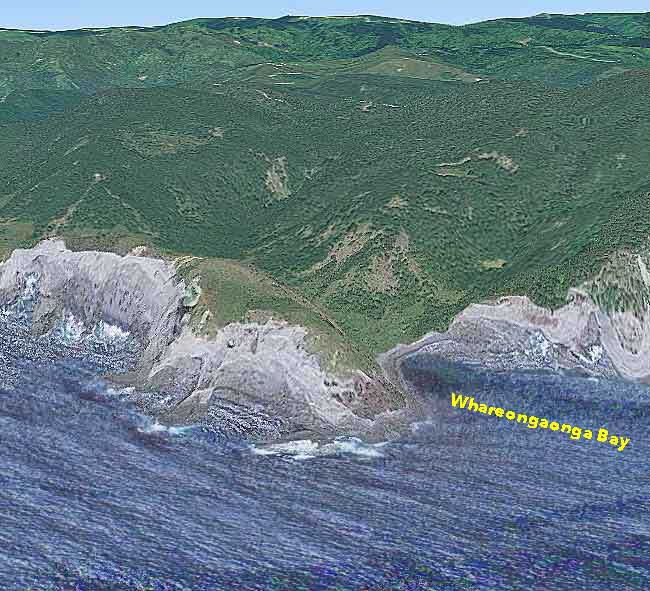Eaten up
| In June 1866, Te Kooti was exiled without trial to Chatham
Island. Arriving in midwinter, the inadequately clothed
prisoners were compelled to build communal shelters out of
ponga and flax. They had to grow food to supplement the
government rations, yoking themselves to ploughs to turn the
soil. The doctor was an alcoholic and the guards often
abused their charges. The cold, damp conditions, inadequate
food, tuberculosis and overwork caused 28 prisoners to die.
Te Kooti himself almost lost his life to Tb, and in his fevered state he heard an angel telling him he was to preach God’s unconditional promise of return from exile, just as God did for the Israelites. After 2 years misery, Te Kooti and his followers comandeered the Rifleman and he departed the Chathams in July 1868 with nearly 300 others: 163 men, 64 women, and 71 children. After a week's voyage, they landed at tiny Whareongaonga Bay, 20 km south of Gisborne.  Although he just wanted to travel in peace to the south Waikato King Country with his followers and develop his Ringatu religion, the government set out to completely destroy him and his followers. After failing miserably to
do this with British troops, the government offered local
Ngati Porou and Kahungunu warriors 5000 Pounds Stirling
($2,500,000 of today's NZ money) to kill him.
"Mō Korotimutimu...." - Korotimutimu was a dolphin that lived between Ahuriri and and Te Awanga, and regarded as the totem animal of Ngati Kahungunu. In the original version of Pinepine te Kura, its ritual slaughter and the eating of its heart symbolised the destruction of Ngati Kahungunu. Because Ngati Kahungunu warriors had tied to kill him without cause, Te Kooti makes his feelings known here. |